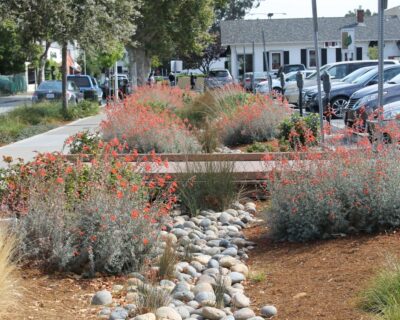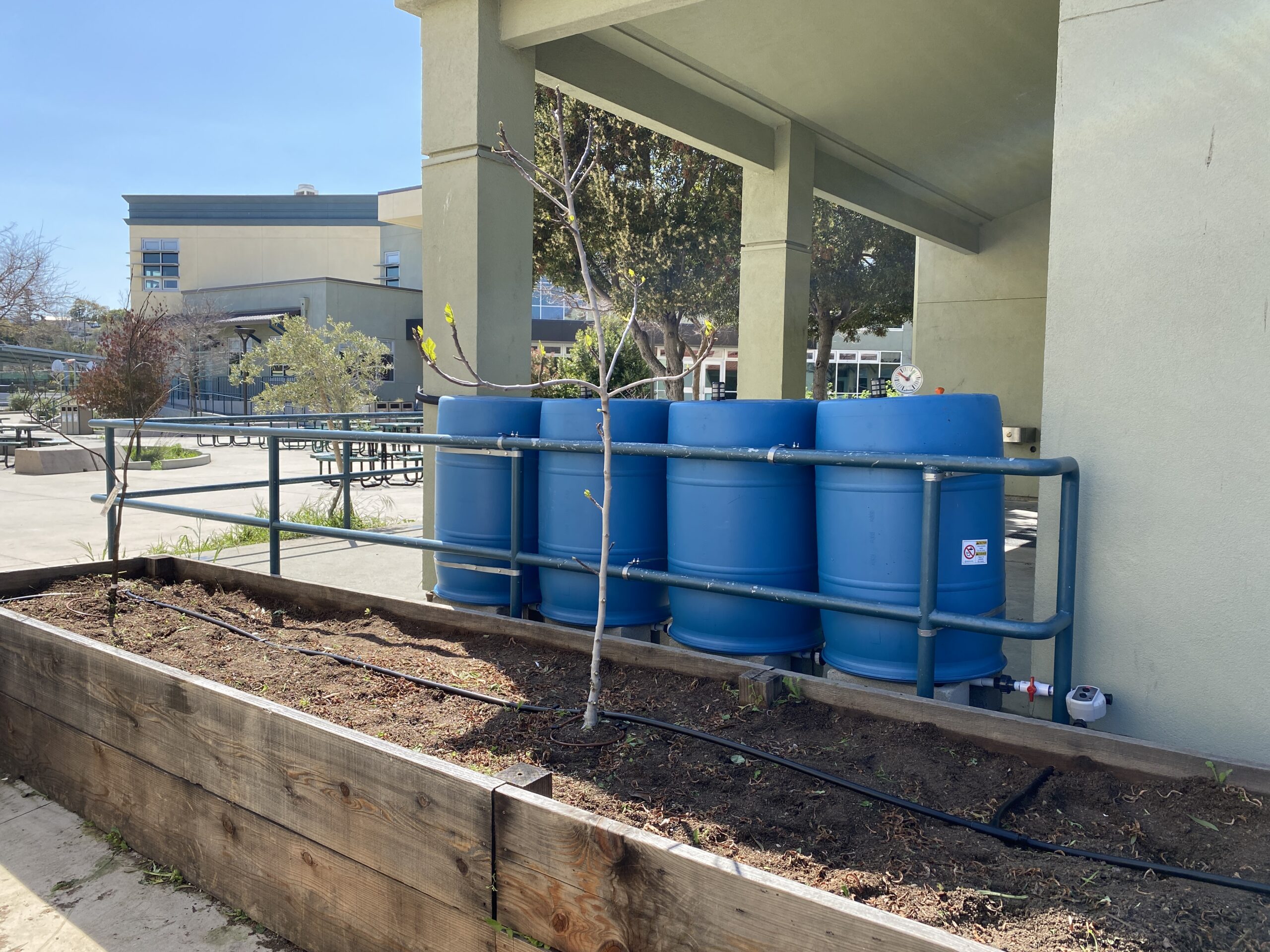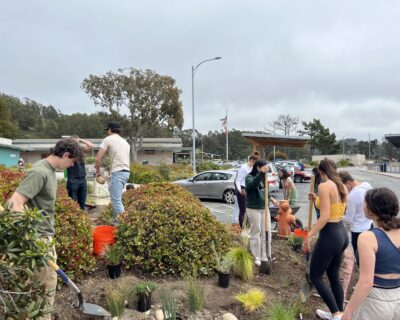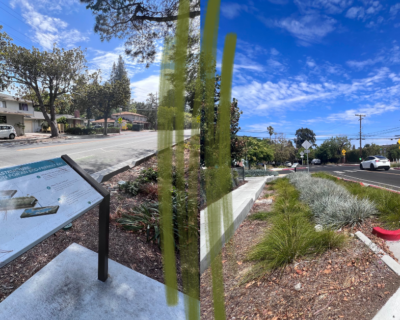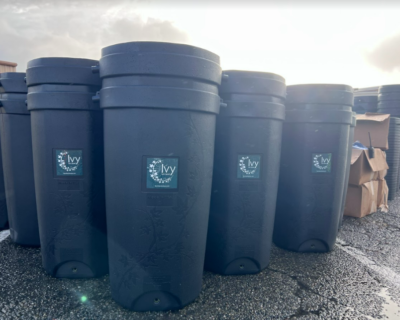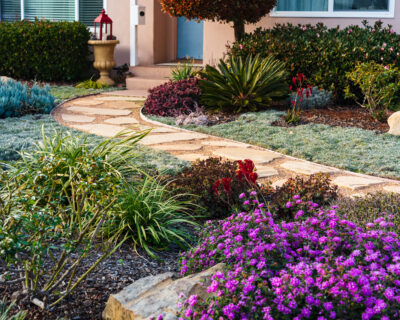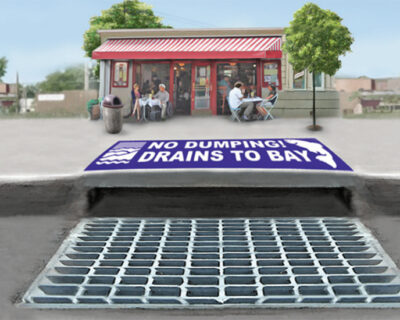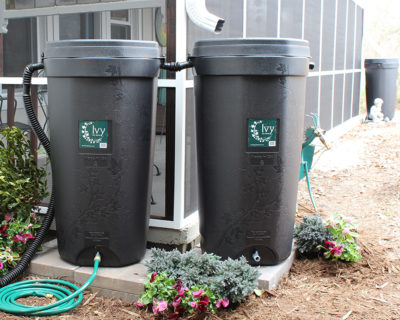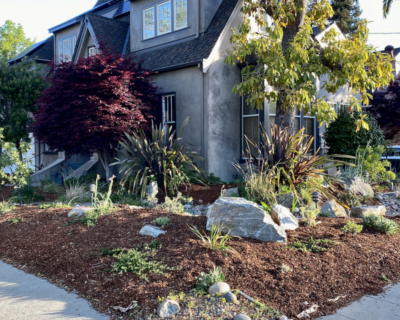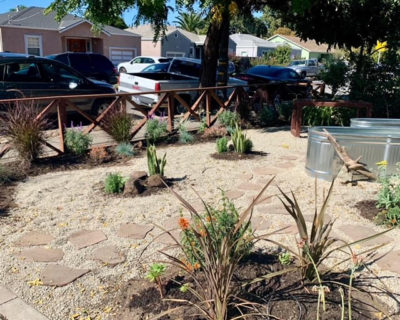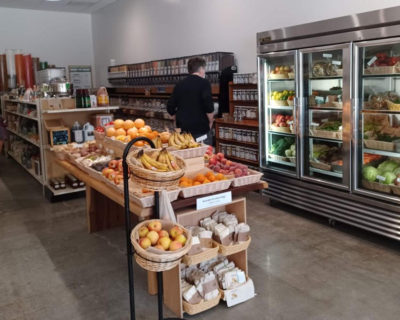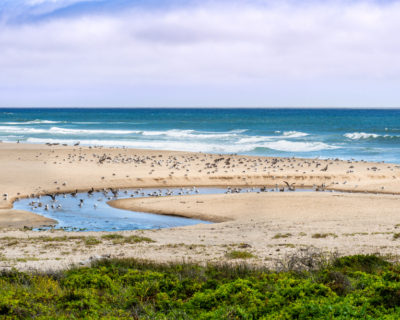Have you ever been caught in a massive downpour and watched the seemingly endless flow of water flush through the streets and spill into storm drains? The power of water is truly remarkable, whether the tidal power of the ocean, or the gravitational stream of rainwater pouring through our streets and sewers. All of life depends on water, yet stormwater is often overlooked, treated as a waste. And with all that water coming out of the sky, have you ever considered where it ends up?
Where does the stormwater go?
Now that our cities and neighborhoods are mostly paved, rain can no longer soak back into the ground and into the roots of plants like it once did. Most of the time, unless you’ve got green infrastructure in your community, stormwater that starts on your street channels through gutters and pipes to nearby water bodies, where the pipe terminates and the water, along with everything it has picked up along the way, joins a stream. This water goes unfiltered into the stream, so everything that has flowed off of lawns (namely pesticides and fertilizers) and spilled out of of overflowing trash cans, ends up in your local watershed. Not only is the waste and pollution itself a problem, but we also, in a sense, “lose” all that water, because it flows unused right out to the bay or ocean. Last year, San Mateo County’s population grew more than it had in the previous 7 years. As our county continues to grow and become more dense, the problem intensifies.
What can be done?
The good news is that we can all take simple actions that can go a long way to lessening the burden on our waterways. Beyond ensuring your cars aren’t leaking oil, picking up your pet’s waste and using eco-friendly pesticides, you can work to reduce the amount of water reaching your storm drains in the first place. This has a two-fold benefit: 1) reducing the flow of water that can pick up pollutants and 2) upcycling some of that water instead of letting it run straight to the nearest drain. Rain Gardens are one way that rainwater can be contained and allowed to infiltrate the ground instead of entering the stormwater system. When planted with native species, rain gardens can also act as effective micro-habitats and pollinator gardens for the non-human neighbors who live on your block.
But what if you want to store stormwater and use it little-by-little, as you need it? Enter the “rain barrel.” You may have seen these perched under a downspout here and there in your neighborhood, passively gathering water. Rain barrels and cisterns vary in size, with storage capacities ranging from a few gallons to a few thousand. They can be used outside to water your garden and hose down the dog, or you may be the adventurous type and want to plumb your toilets with rainwater (though rainwater that supplies indoor fixtures requires proper filtration first – check with your local public officials and health department before trying this one…).
Acquiring a rain barrel of your own.
But wait, there’s more good news! San Mateo County offers an excellent rebate program that makes owning a rain barrel more affordable than ever. The rebate of up to $100 can cover a substantial portion of the typical cost of a 55-gallon rain barrel at your local hardware store. You can fill out a rebate application here.
Why should you install a Rain Barrel?
In addition to reducing your water bill, rain barrels are beneficial for a host of other reasons:
1.) You’ll help reduce water pollution from runoff.
Like rain gardens, rain barrels work to protect local creeks, the San Francisco Bay, and the Pacific Ocean by reducing urban runoff. During heavy rains, water that is not able to be absorbed by the soil will “run” towards the lowest point on your property to a gutter or storm drain. As runoff flows over the top of the soil it picks up fertilizers, pesticides, trash, oil, and dirt—all of which act as pollutants as they enter local waterways.
2.) Rainwater is free of the additives that tap water has for sanitation.
While safe for human consumption, the salts, inorganic ions, and fluoride compounds found in tap water can slowly accumulate in soil and disrupt the communities of microorganisms that are important for soil health. Over time, plant growth can be affected by this changing soil environment.
3.) Mold flourishes in damp environments.
As we enter the rainy season, prolonged periods of rain can create ideal conditions for mold growth. By collecting water from downspouts, rain barrels are an easy way to protect the siding and foundation of your home from deterioration.
4.) Become your block’s shining beacon of environmental stewardship!
Rain barrels are great conversation starters. Show your neighbors what you’ve done and tell them about the rain barrel rebate program! Think of a fun way to decorate your barrel and become the local envy! When the jealousy wears off, your neighbors will thank you, and so will the earth.
We want to hear from you!
Share any thoughts and questions you have about our rain barrel program and our stormwater management efforts, by emailing info@flowstobay.org. We encourage feedback and would love to hear your suggestions for how to engage residents of San Mateo County!

